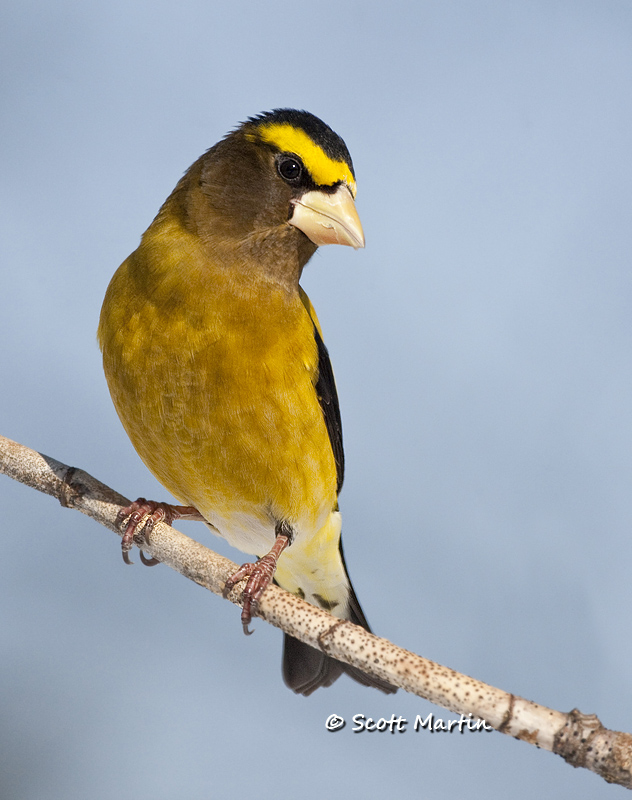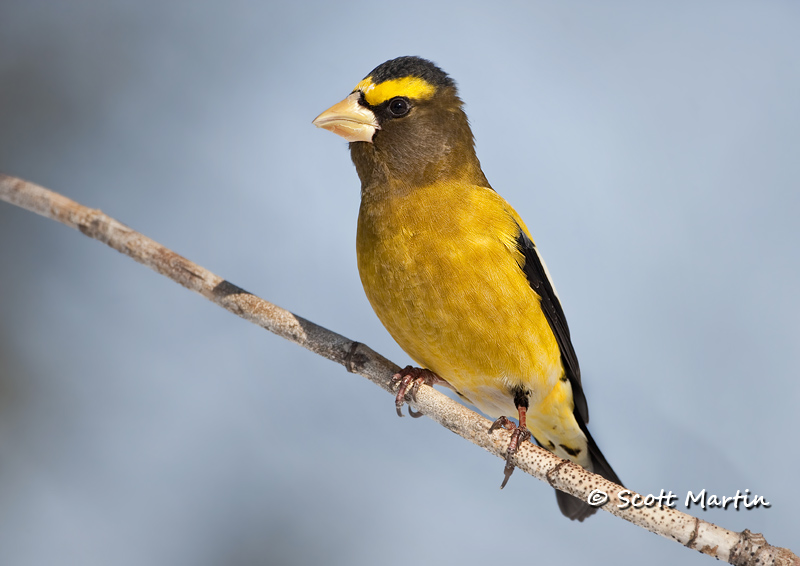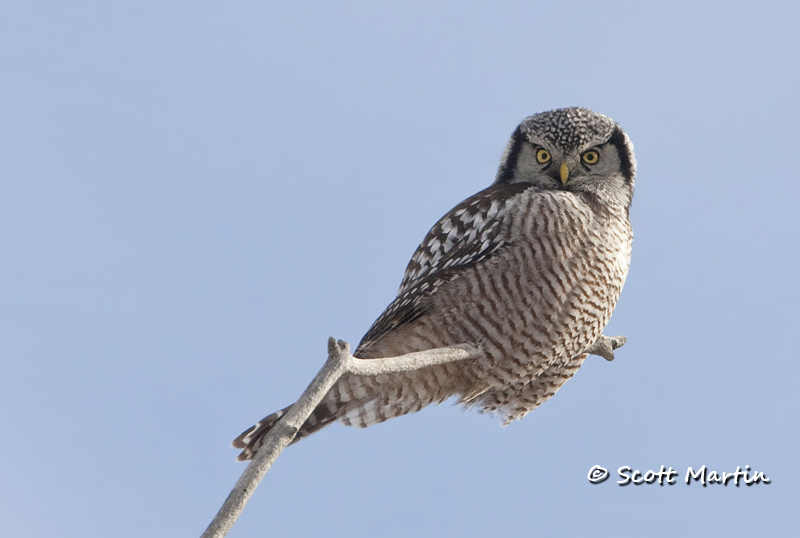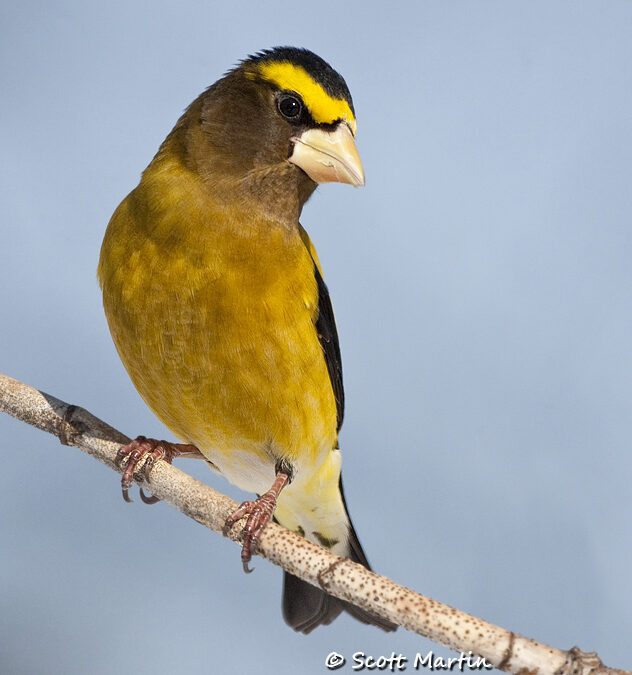After making a most enjoyable return trip to the Kawartha Lakes Region of Ontario, I was able to get some acceptable images of male Evening Grosbeaks. The bright white secondary wing feathers on males creates a photographic challenge as the tendency is to over expose the whites removing all detail and commonly referred to as “blowing out the whites”. Blown whites are a huge faux pas in photography however avoiding them completely is often very difficult if not impossible. They occur very easily when shooting birds with contrasting dark & light colours, such as Black Capped Chickadees, Buffle Head Ducks or in this case Evening Grosbeaks. The methods used to lessen the likelihood of blowing out the whites are many however they all involve underexposing the recommendations from what the camera meter is suggesting (unless you are able to spot meter on the whites alone in the viewfinder). Creating an image with the whites properly exposed darkens the shadows and typically underexposes the rest of the scene, however this can be accommodated for quite easily in post processing, especially if you are shooting in RAW. Remember you can always get more detail back from the shadows & underexposed areas of an image but once you blow the whites you can never reclaim any detail with Photoshop.
Here are some male Evening Grosbeaks

.

.

…..and finally another female.

Click on the Evening Grosbeaks Blog to learn more about Evening Grosbeaks and on the Grosbeaks Gallery to see more images.
On an unrelated and unfortunate note, it was reported on Valentine’s Day, that a Northern Hawk Owl wintering in the Kawartha Lakes Region was struck and killed by passing car while the owl was hunting for food. Bob Bowles, noted Orillia Naturalist, provided the following report:
“The Northern Hawk Owl that was found during our Carden Alvar CBC on January 2, 2011 has been hunting in the wetland near the junction of Road 46 from Simcoe and Road 6 from City Of Kawartha Lakes. Several birders have reported this bird this winter during the month of January and into February. This morning it was found dead on the side of the road between Avery Point Road and the junction where is was first reported. It had a Meadow Vole clutched in its right talon and had a broken left wing. We can only assume that it was hit by a passing vehicle as it hunted along the roadway.
For the last three years, a Northern Hawk Owl has been observed during winter each year just after Christmas in most cases near Orillia. All have ended up the same way being found dead after being hit by a passing vehicle. This bird had been observed a few weeks ago hunting near the road and flying low over the road barely being missed by passing cars. I was hoping that this one would make it through the winter to return north in the spring but it didn’t make it”.
Here is a shot of the Northern Hawk Owl taken last month while it perched in a tree alongside County Road 46. Others can be seen in the Owl Gallery



Great shots and very informative. Too bad about the hawkowls!.
Thanks Don. I’m using a wordpress app on my phone to comment so hopefully it works.
Great work Scott, I see you finally got your prize. I love the yellow eyebrow which makes the male look like a superhero (which it is in my humble opinion) It was with great sadness that I read about the death of the Northern Hawk Owl. When I first saw it back in January, it was perched beside the road and went after a vole in the ditch right behind our car. Since they are not car-wary like squirrels, it was only a matter of time and bad luck. BTW, there is an update on the NoHO posted today.
Thanks Arni and both trips to Uphill have been excellent. You are right with your ‘Super Hero’ description of the male Evening Grosbeaks and now that’s the way I will think of them! I was relieved to hear that there have been two NHO’s in the area but amazed no one ever saw them together.